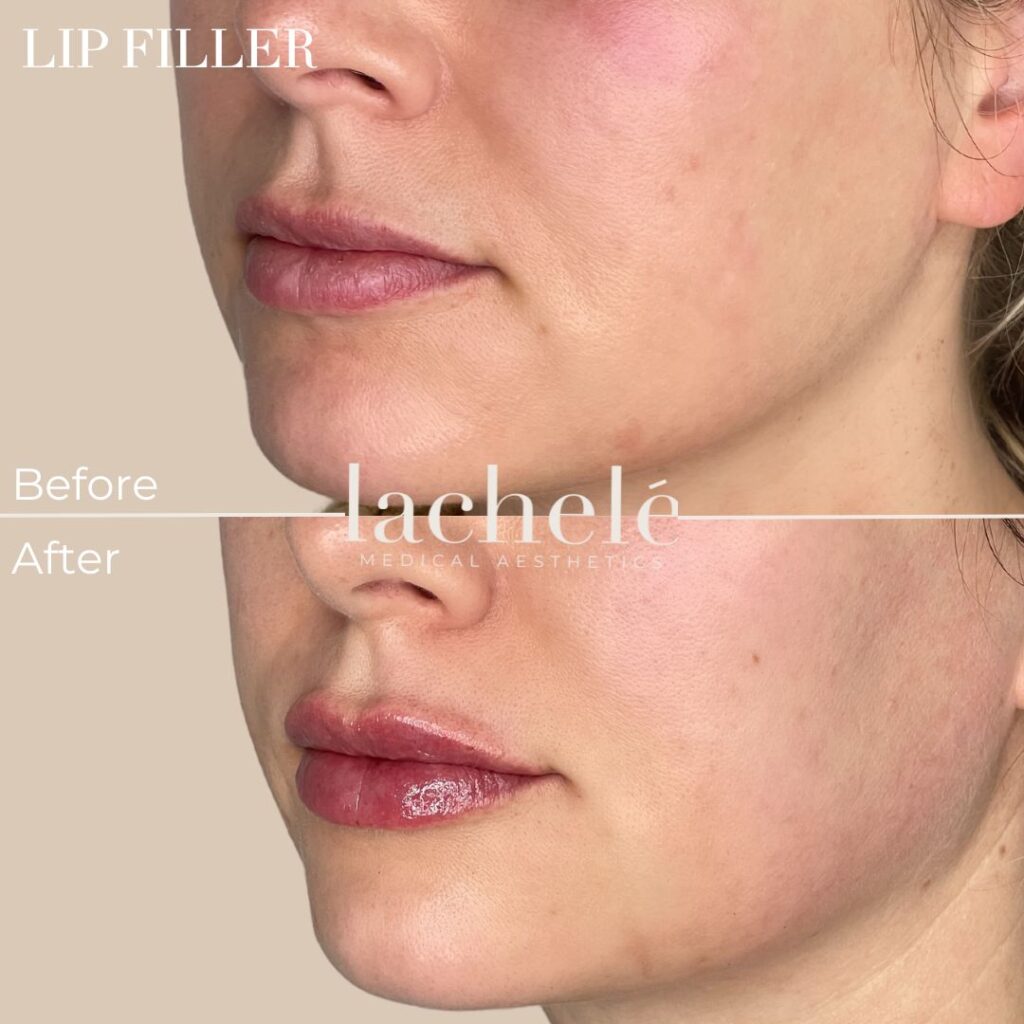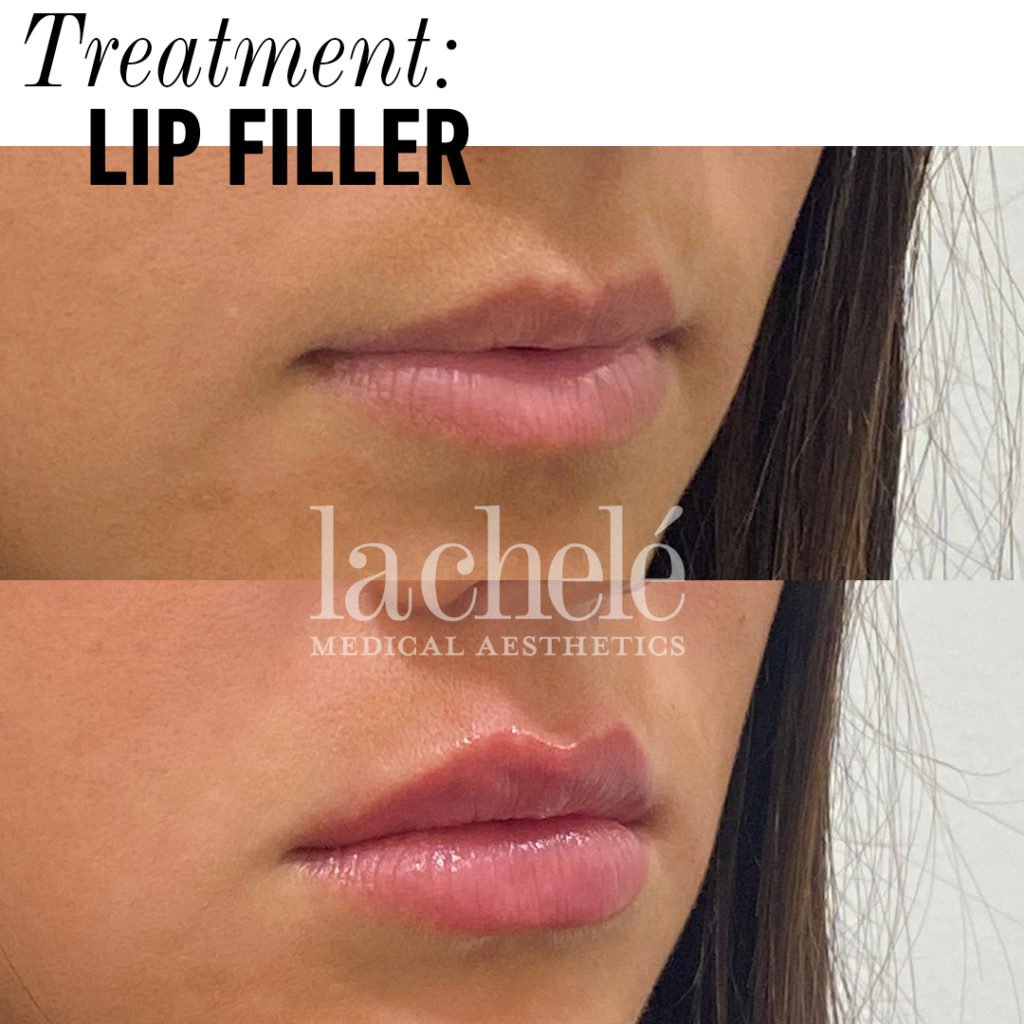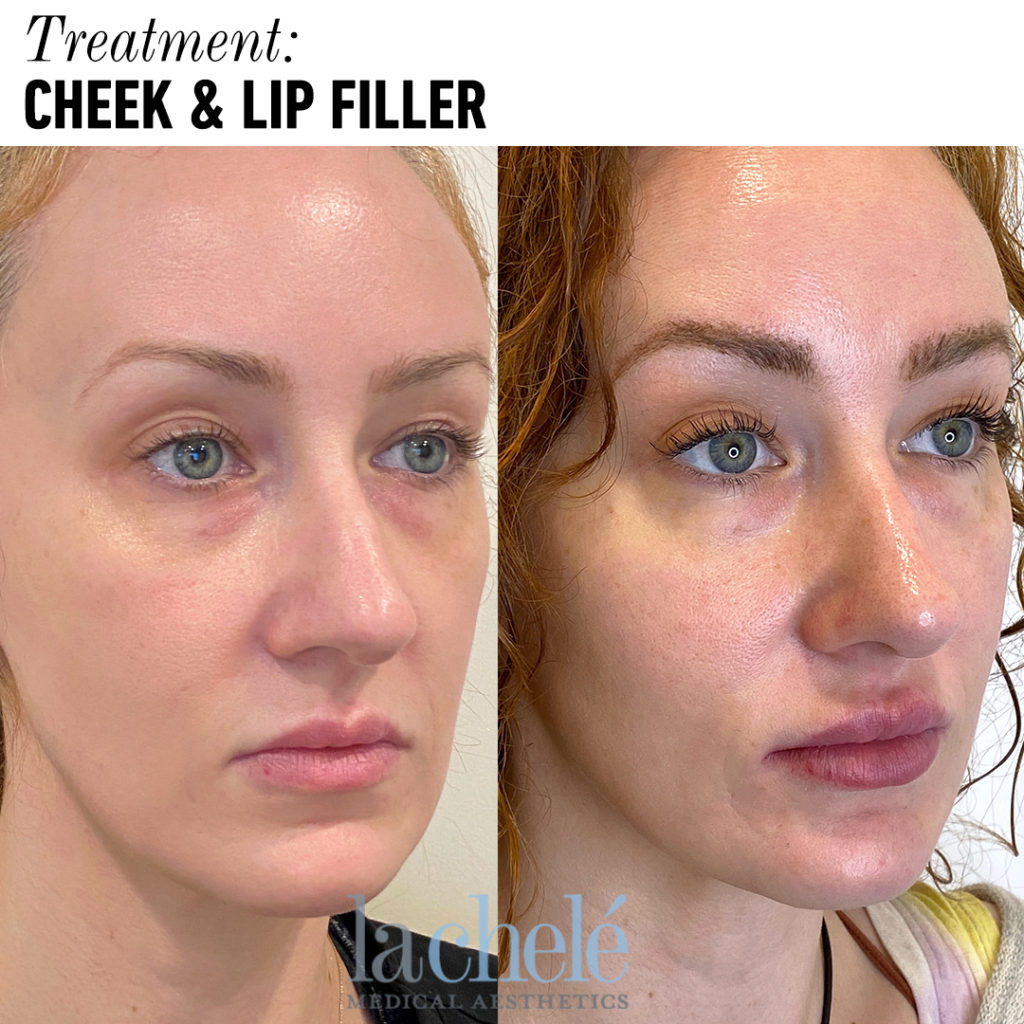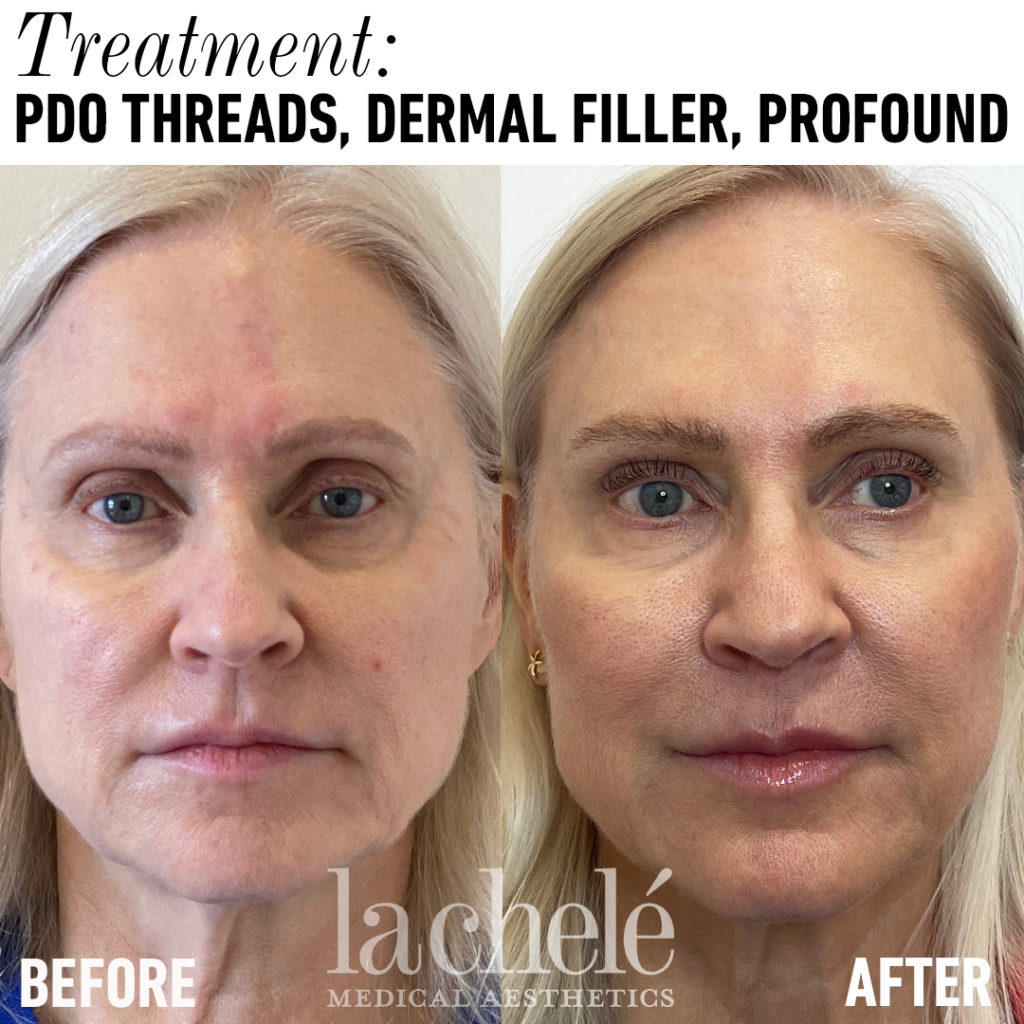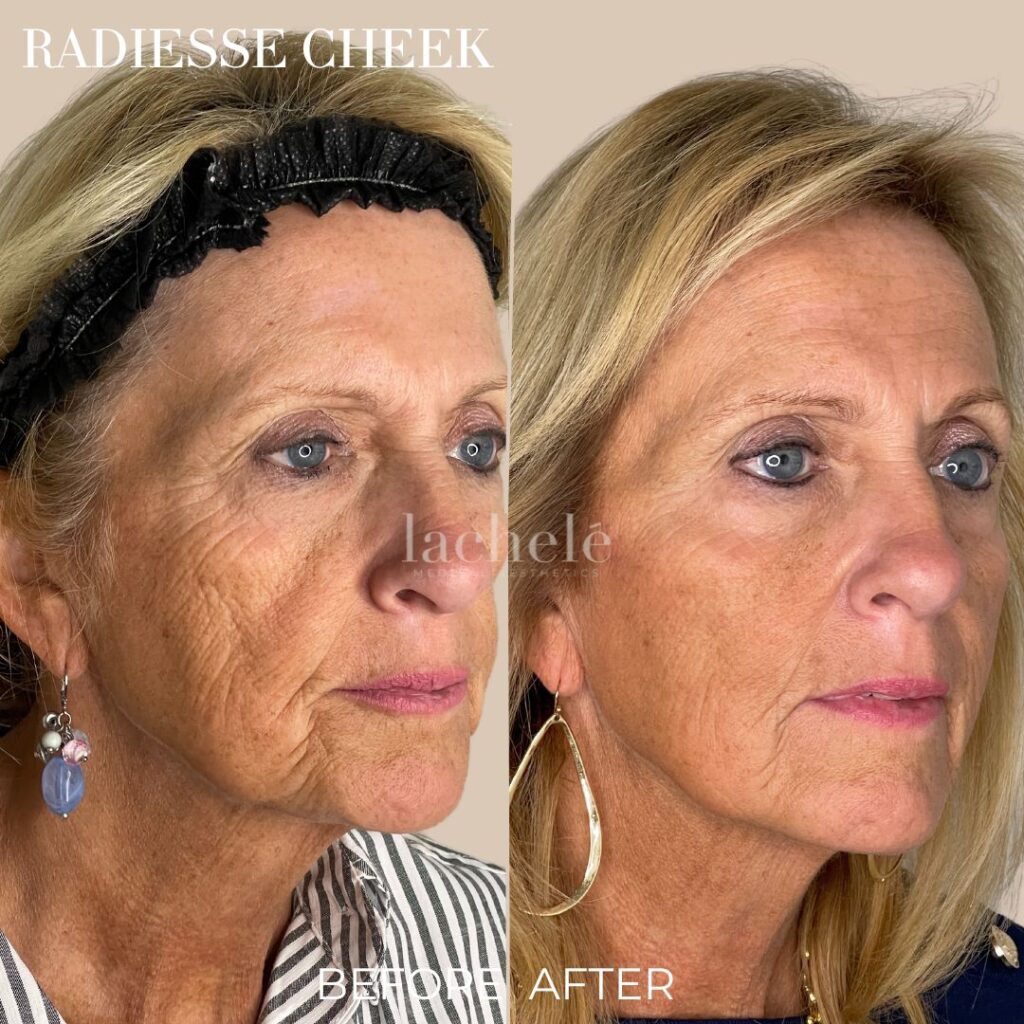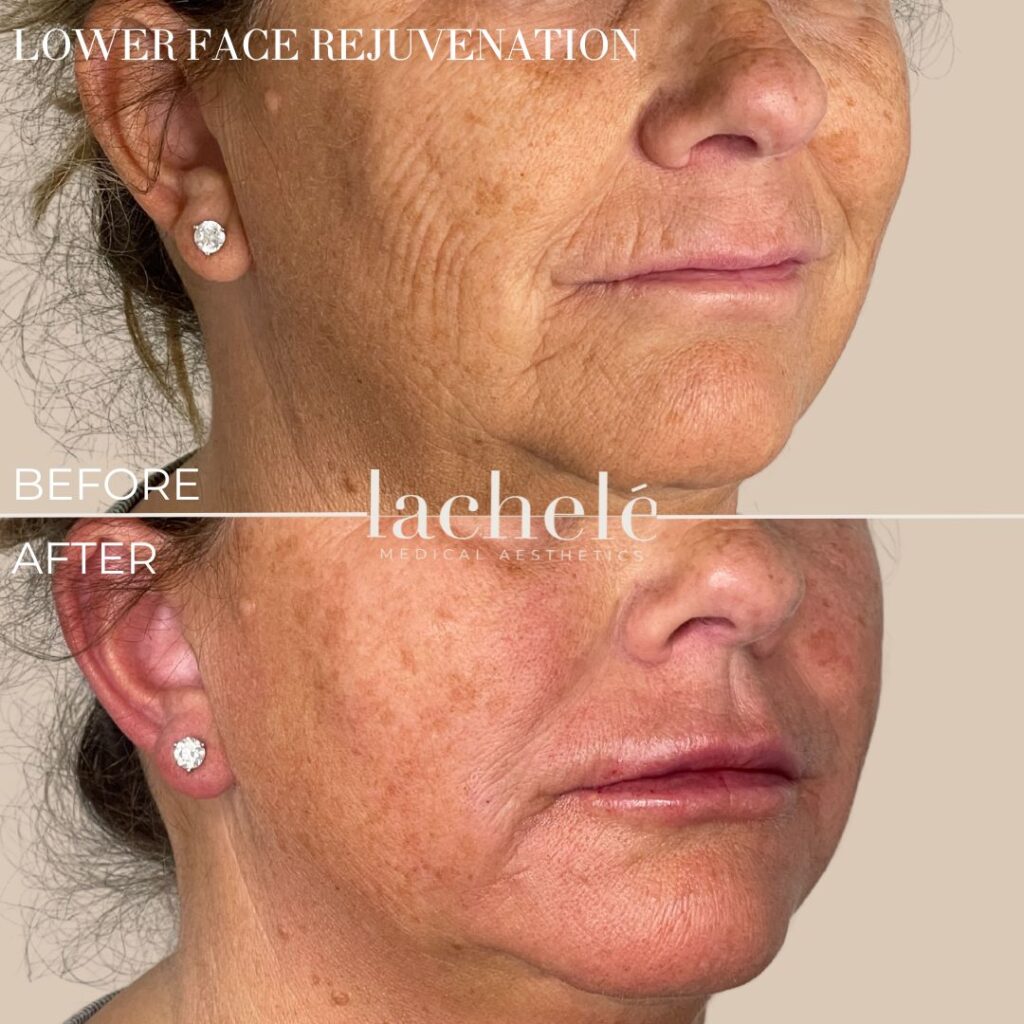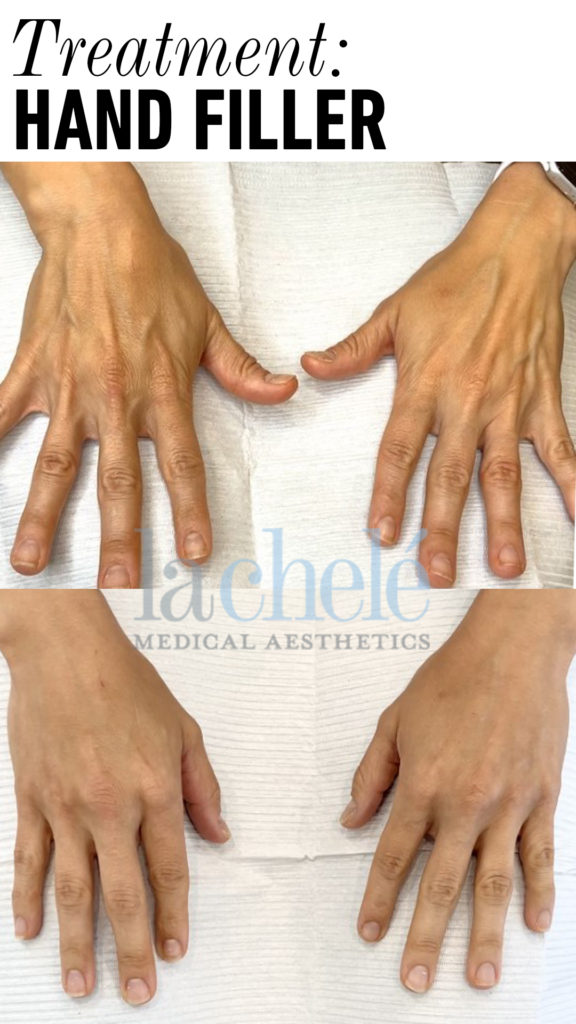Dermal Filler
Dermal fillers are injectables used to restore volume and enhance natural features. These products can be used in various areas of the face and body, depending on the patient’s unique anatomy and aesthetic goals. There are many types of fillers, such as hyaluronic acid filler (Restylane, Juvederm, RHA), and bioregenerative filler (Sculptra, hyperdilute Radiesse, Renuva). Each filler is individually formulated for specific uses in the face and body.
What are the benefits and uses of dermal fillers?
Why choose La Chelé?
La Chele is one of the top 25 largest injectable centers in the world! Our injectable artists are highly trained by Dr. Lisa Espinoza. Ranging from Physician Assistants, Nurse Practitioners, and Nurses, our Providers are able to confidently and accurately assess an individual’s aesthetic needs while maintaining a comprehensive treatment approach. Our customized, proprietary and unique approach is unlike what you’ll find at other aesthetic practices. With four state-of-the-art locations and over 19 years of business, La Chele is truly an oasis for your skin and wellness.
What are the benefits and uses of dermal fillers?
Benefits:
- Non-surgical
- Fights the signs of aging
- Adds natural volume and hydration
- Naturally metabolized by the body over time
Uses:
- Lip augmentation
- Decrease the appearance of under eye hollowing
- Improve lost volume
- Improve deep lines
- Rejuvenate the hands
- Add projection and definition to the chin and jaw
- Increase collagen production in the skin
We often get the question, “how long between lip filler treatments?”
The longevity of filler in various areas of the face and body can range from 6-12 months, which depends on several different factors and varies from person to person. Key factors that influence how long your filler lasts include the specific type of filler being used and the rate at which the body metabolizes the product.
How quickly will I see results from filler?
The effects of dermal fillers can be seen immediately after injection. However, filler injections can cause some swelling and bruising, so it can take 2-4 weeks for the filler to fully settle.
How long after lip filler are you swollen?
Lips typically have a significant amount of swelling with the majority of the swelling being within the first 24-72 hours post-injection. Keep in mind that the lips will reduce in size by about 30% as the swelling gradually resolves over the first two weeks. Here are some helpful tips to avoid bruising!
What happens at a filler consultation?
When you visit us for your consultation, you’ll meet with one of our talented Providers who will take the time to discuss your goals and concerns regarding the treatment. Some patients arrive with a clear idea of what they want, while others seek our providers’ expert recommendations to enhance their features and address their needs.
Next is an assessment of the treatment area(s), where our providers will examine any asymmetries, irregularities or disproportionalities that may be corrected with the various types of fillers. At La Chelé, we favor a conservative approach with natural-looking results when it comes to any treatment. Our providers will select the appropriate fillers for the areas that you want to be addressed, and then it is time for injecting!
For patients unhappy with filler or existing filler that needs to be corrected from another Practice, visit our dissolving clinic.
What to avoid before dermal filler?
Dental work should be avoided at least 2 weeks prior to treatment. To avoid possible bruising, its recommended to avoid blood thinners such as NSAIDs (Ibuprofen, Naproxen, etc.), alcohol and caffeine. It’s strongly recommended that you consult with your prescribing physician if you are currently on a blood thinner before you discontinue the medication.
What are types of dermal fillers?
Hylauronic acid (HA) fillers provide an instant result. These fillers include Juvederm (Volux, Voluma, Ultra Plus, Ultra), Restylane (Lyft, Defyne, Kysse, Refyne), and RHA products.
Biostimulatory fillers such as Sculptra or Radiesse allow for the body to produce natural collagen to volumize an area over time.
When can you exercise after dermal fillers?
It is recommended you wait at least 24 hours before exercising after filler treatment. It’s important to keep the treatment area as clean as possible.
How long does dermal filler in cheeks last?
This depends on the product, the quantity of injected product and the metabolism of the patient. Studies show filler in the cheeks can last 9-12 months.
Do dermal fillers help prevent wrinkles?
Dermal fillers help to improve volume loss in certain areas of the face and body. Volume replacement can provide support for fine lines and wrinkles that lack support. Dermal fillers do not necessarily prevent wrinkles from forming, but can allow for the skin to remain hydrated.
Which dermal filler lasts the longest?
The duration of dermal filler depends on the amount of product used and the metabolism of the patient. Fillers placed in less mobile areas of the face (cheeks, chin, jawline) can last from 9-12 months. In areas of hypermobility (lips and around the mouth), fillers may last 6-9 months.
Do dermal fillers migrate?
Migration can occur if too much product is placed incorrectly. It is strongly recommended to visit an experienced provider to avoid migration.
How much is dermal filler for jawline?
The price of dermal filler for the jawline varies based on a patient’s volume loss and aesthetic goals. The more volume that needs to be replaced, the more filler that needs to be used. It’s strongly recommended to consult with an experienced La Chele provider to see if you are a candidate for jawline filler.
Does weight loss affect dermal fillers?
Yes, weight loss can affect the longevity of dermal fillers. Weight loss results in a decrease in volume due to increased metabolism. After completing the Lifestyle Medical Weight Loss Program, many of our clients seek dermal filler treatments.
How long do dermal fillers take to settle?
Although filler yields an instantaneous result, fillers can take up to 2 weeks to fully integrate into the tissue. Over the course of these 2 weeks, some swelling and bruising may occur at the treatment site.
Do dermal fillers last?
The longevity of dermal fillers can vary based on the type of filler, and the amount used. There can also be variability from patient to patient but generally dermal fillers can last anywhere from 6-12 months
What is dermal filler made of?
Dermal fillers are typically made of substances like hyaluronic acid, calcium hydroxylapatite, and poly-L-lactic acid. These materials help restore volume, smooth wrinkles, and enhance facial contours. Hyaluronic acid is one of the most common types of filler used.
What dermal fillers are safe?
Dermal fillers that are FDA-approved and made from biocompatible materials, like hyaluronic acid (e.g., Juvederm, Restylane) and calcium hydroxylapatite (e.g., Radiesse), Poly-L-lactic Acid Fillers (e.g., Sculptra), are generally considered safe when administered by a trained professional. It’s important to consult with a licensed practitioner to ensure the right product and technique for your needs. Always choose FDA-approved fillers and avoid unregulated or off-label products to minimize risks.
What should I avoid after dermal fillers?
After dermal fillers, it’s important to avoid touching or massaging the treated areas to prevent shifting the filler. Refrain from heat exposure, such as saunas, hot showers, or direct sun, for at least 24-48 hours to reduce swelling. Avoid strenuous exercise for the first 24 hours to prevent increased swelling or bruising. Additionally, steer clear of alcohol and blood thinners as they can increase the risk of bruising. Lastly, try not to sleep on your face to avoid putting pressure on the treated areas. These precautions help ensure optimal results and reduce complications.
Do dermal fillers dissolve?
Yes, dermal fillers can dissolve over time. Fillers made from hyaluronic acid are particularly known for being naturally absorbed by the body, typically within 6 to 18 months. Other types, like poly-L-lactic acid or calcium hydroxylapatite, gradually break down over a longer period as they stimulate collagen production in the skin. The exact duration varies depending on the type of filler, the area treated, and individual factors like metabolism.
Are there side effects to dermal fillers?
Yes, dermal fillers can have side effects, although they are typically mild and temporary. The most common side effects include swelling, bruising, redness, lumps/bumps and tenderness at the injection site. In very rare cases, the filler may be accidentally injected into a blood vessel, which could lead to more serious issues like tissue damage. These risks are minimized when the procedure is performed by a qualified and experienced practitioner.
Where can I get dermal fillers near me?
We offer dermal fillers in all of our locations in New Hope, Newtown, Upper Dublin, and Newtown Square.
Recommended Skin Care Products to pair with Dermal Fillers:
To pair with dermal fillers, it’s recommended to use gentle skincare products that support hydration and skin health. Look for moisturizers with hyaluronic acid, which helps maintain the skin’s moisture balance. Sunscreen with broad-spectrum protection is essential to prevent sun damage. Additionally, use mild cleansers and avoid harsh exfoliants or products with strong acids, which can irritate the skin. Products with peptides, antioxidants, and growth factors can also help boost collagen production and improve overall skin appearance. Always consult with your practitioner for personalized skincare recommendations.
Are you interested in a dermal filler treatment? Call today 855-522-4353.
Learn more about the fillers we offer:
Restylane® Kysse

